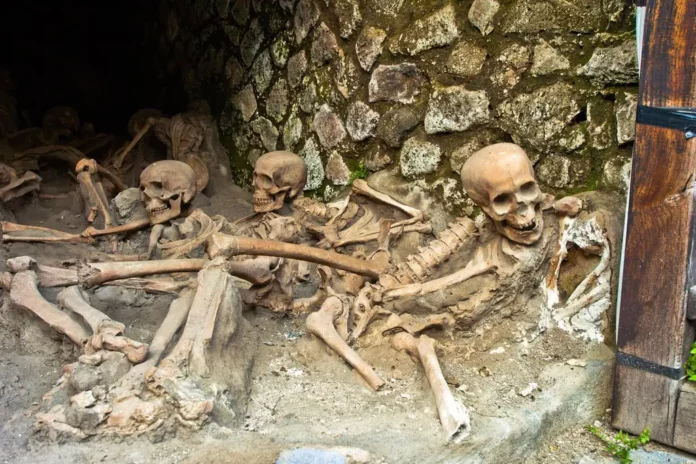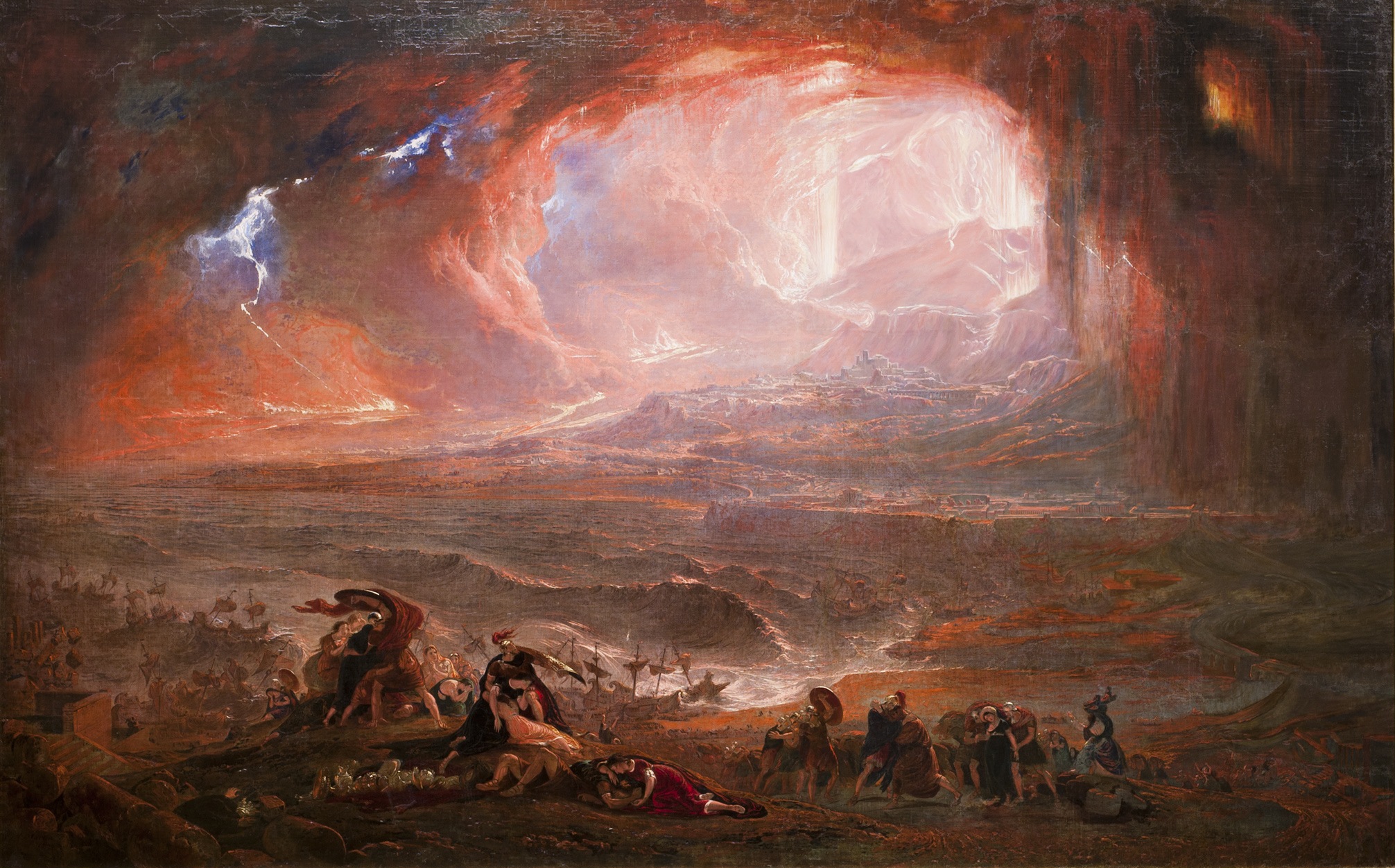The devastating eruption of Mount Vesuvius in 79 A.D. has left an enduring mark on the Roman communities surrounding the Bay of Naples. Among these, Herculaneum offers a particularly somber scene, with victims discovered huddled together in stone boathouses, referred to as fornici. Two recent studies have provided fresh insights into the fate of these individuals, challenging established beliefs about their demise.
The Heartbreaking Situation at Herculaneum
On August 24, 79 A.D., as Vesuvius erupted, the inhabitants of Herculaneum sought sanctuary within the stone boathouses along the coast. Unlike Pompeii, which was engulfed in ash, Herculaneum was annihilated by a pyroclastic flow—a lethal, swiftly moving wave of ash, gas, and rock. Excavations since 1980 have revealed the remains of 340 individuals within these boathouses and along the beach.

For many years, researchers have debated the cause of death for these victims. A common theory posited that the extreme heat caused their blood and brains to vaporize. Some even suggested that a person’s brain could turn to glass under such intense conditions. However, two recent studies have introduced new viewpoints into this discussion.
Revisiting the Vaporization Theory
A study published in the journal Antiquity contests the vaporization hypothesis. Researchers analyzed the bones of 152 individuals from six of the twelve boathouses, focusing on the crystal microstructures and remaining collagen in the bones, which change with thermal exposure. Their results indicate that the stone boathouses and the aggregated body mass of the victims provided some insulation from the searing heat, exposing them to temperatures around 500 degrees Fahrenheit—considerably lower than the peak temperatures of pyroclastic flows.

Tim Thompson, a professor of applied biological anthropology at Teesside University and co-author of the study, suggests that this insulation may have led to a slower, more painful death, likely due to suffocation as debris and gases trapped them within the boathouses.
The Glass Brain Theory
In contrast, another study published in the New England Journal of Medicine examined a victim discovered in the Collegium Augustalium, a building on Herculaneum’s main street. This research claims that the high temperatures from the pyroclastic flow vitrified the victim’s brain, transforming it into glass. Forensic anthropologist Pier Paolo Petrone from the University Federico II of Naples attributes this occurrence to the extreme heat that caused the skull to rupture.

Diverse Conditions and Interpretations
Dr. Thompson explains these varying findings as being influenced by the different environments of where the victims were located. Those in the boathouses were sheltered within enclosed stone structures, while the victim from the main street was exposed to a more open setting. These contrasting conditions likely affected their respective causes of death.

However, Dr. Petrone is skeptical about these new interpretations, asserting that the study did not adequately consider all available evidence, including taphonomic and bioanthropological factors. Dr. Killgrove, a bioarchaeologist at the University of North Carolina, also questions the glass brain theory, pointing out that the identified fatty acids could originate from various sources.
A Complex Situation
Despite these differing viewpoints, Dr. Thompson believes that both scenarios could potentially coexist at the site due to the multifaceted nature of the disaster. As research progresses, these studies highlight the necessity for renewed exploration into the causes of death at other sites impacted by Vesuvius, such as Oplontis and Pompeii.

The eruption of Mount Vesuvius continues to captivate and disturb us as new research reshapes our understanding of the tragic events that transpired. While discussions surrounding the deaths of Herculaneum’s victims remain ongoing, these studies emphasize the importance of reexamining historical evidence. As we learn more about these ancient tragedies, we gain valuable insights into the lives and fates of those who confronted Vesuvius’s wrath.

